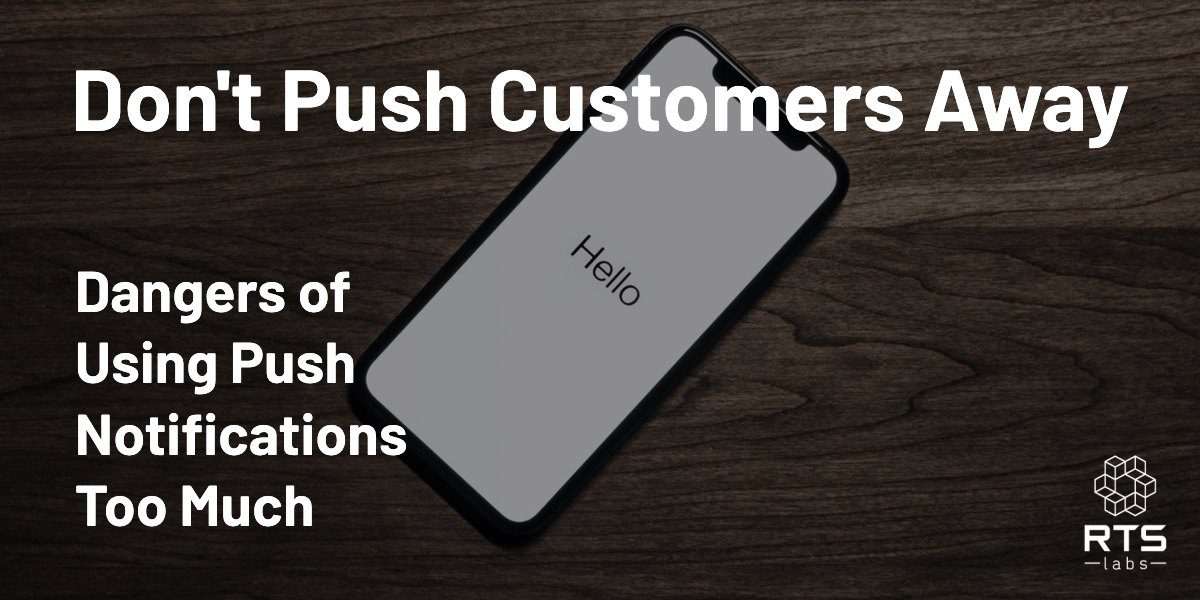Does it feel like your smartphone *ping* demands more and more of your attention lately? How many minutes go by *buzz* without your phone vibrating or making some sort of noise to get you to look at it? And if it isn’t your phone, it’s *ding ding* someone else’s. Ah, the joy of push notifications.
As an app developer, you have good reasons for including push notifications into your latest app. Push notifications are great for giving updates and prompts to users, which in turn gets them using your app so they get familiar with it – and even reliant on it. And there’s no shortage of reasons to notify users. From social media updates and location-specific alerts to “Breaking News” headlines and “Hey, we haven’t seen you in a while” messages, push notifications have become the dominant way apps and websites engage users.
However, it’s a delicate balance. If you have too many notifications, you risk pushing customers away, which is one of the dangers of using push notifications too much. You also risk bad reviews and actually making the app harder to use for people who aren’t as tech savvy and don’t know how to change their notification settings easily.
So, this begs the question: How many push notifications are too many?
What the stats tell us
In 2013, Apple announced that 7.4 trillion of these push notifications had been sent to users from their devices and browser. Obviously that that number has grown since then, but as a 2013 stat, it’s a bit alarming. While that number has certainly increased, over the past five years there have been increasing calls to re-examine the role technology plays in our lives.
Even David Pierce, a senior staff writer on personal technology for Wired, issued a manifesto of sorts last year in a provocative piece titled, “Turn Off Your Push Notifications. All of Them.” Beyond his own experiences with new crossword notifications and spam, Pierce also quotes Tony Fadell, who helped invent the iPod and iPhone, as one of many experts who are concerned that constant notifications make children and others dependent on smartphones.
How do users feel?
Localytics, an app marketing and analytics platform, conducts an annual survey of smartphone users to assess consumer perspectives on push notifications. In general, users tend to dislike notifications. Only one in five respondents describing them as helpful. Despite the dislike, however, many users permit the notifications as long as they don’t get too many of them. The results from a survey show 10 percent of respondents said they disable notifications if they get even one per week, while 37 percent said two to five per week were their tipping point.
If your app or website relies on a few key notifications, the news is not all bad. The same survey in 2015 found that more users disabled notifications, showing a threshold of two to five notifications per week for 46 percent of respondents. Even a single notification was too much for 13 percent that year. If a trend can be implied from the data, it suggests that users are getting more comfortable with notifications, at least until they hit six or more.
At that level, users opt out at higher rates than they did in 2015, supporting the view that push notifications should be limited to only important, carefully thought out updates. The survey was agnostic about what updates contained but did ask users if they prefer notifications based on their behavior or on a list of preferences. Overwhelmingly, users preferred opt-in personalization.
Have good content and a good strategy
Of course, these annual surveys leave out key questions. Most importantly, what types of updates were users thinking about when they answered this survey? For example, if users receive push notifications about game requests from social media or spam, odds are that users view those notifications less favorably than, say, updates on their favorite sports teams.
Without analytics and data on your users, there isn’t a hard and fast rule, but the Localytics study suggests that the safest route is to start small and track the metrics. Only 6 percent of all respondents said they’d stop using an app over a single weekly push notification. That stat leaves considerable leeway for companies. One good and relatively safe strategy is to start with a weekly notification, which you can then use to gather data and measure its impact and success.
If your users find the notification useful or engaging, the data will show it. With applied data and analytics, you can determine exactly how your users feel about the outreach, and then grow from there.
Are you reading this because you WANT an app but aren’t sure if it’s the right decision? Download our whitepaper for the before questions you should ask yourself before developing an app, and get some clarity!






